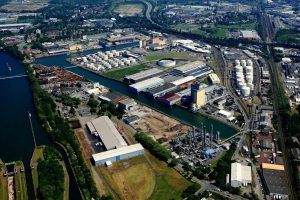Green rail industry
“Our ambition is to accelerate the adoption of hydrogen power in the rail industry by developing innovative solutions that help green heavy-duty mobility operations like rail freight,” said Raphaël Bernardelli, Vice President, Corporate Strategy, Alstom. In order to help drive the evolution of the hydrogen rail sector we need to gather stakeholders, and this is exactly why we have decided to partner with ENGIE.”
Hydrogen fuel cells
Alstom has been working since 2013 on the launch of a regional passenger train equipped with hydrogen fuel cells: the Coradia iLint. The first two 100% hydrogen iLint trains entered commercial service in 2018 in Germany and, to date, 41 trains have been ordered by two German Landers, and successful trials have taken place in Austria, the Netherlands, Poland, Sweden, and France.
In 2021, France also joined the circle of ‘founding countries’ with an order from SNCF for 12 Coradia Polyvalent Regiolis dual-mode (electric/catenary and hydrogen/fuel cell) trainsets for the regions of Auvergne-Rhône-Alpes, Bourgogne-Franche Comté, Grand Est and Occitanie.
In 2021, Alstom continued to build a complete ecosystem for its hydrogen rail offering, signing partnership agreements with players such as Liebherr – Aerospace & Transportation SAS, Hynamics, and Plastic Omnium.
Alstom also invested €6 million in a new hydrogen fuel cell manufacturing platform at the Alstom Hydrogen site in Aix-en-Provence.
For ENGIE, this partnership is in line with its aim to supply heavy-duty mobility markets with renewable hydrogen, thanks to its target production capacity of 4 GW by 2030.
“After successfully supplying the Coradia iLint during tests in the Netherlands in 2020, we are delighted to continue our efforts with Alstom in decarbonising heavy-duty mobility by combining our respective expertise to serve European rail freight,” said Sébastien Arbola, Executive Vice President in charge of Thermal Generation, Hydrogen & Energy Supply, ENGIE. “This partnership marks a new step in the development of decarbonated hydrogen solutions to answer to the strong demand of these growing market.”






